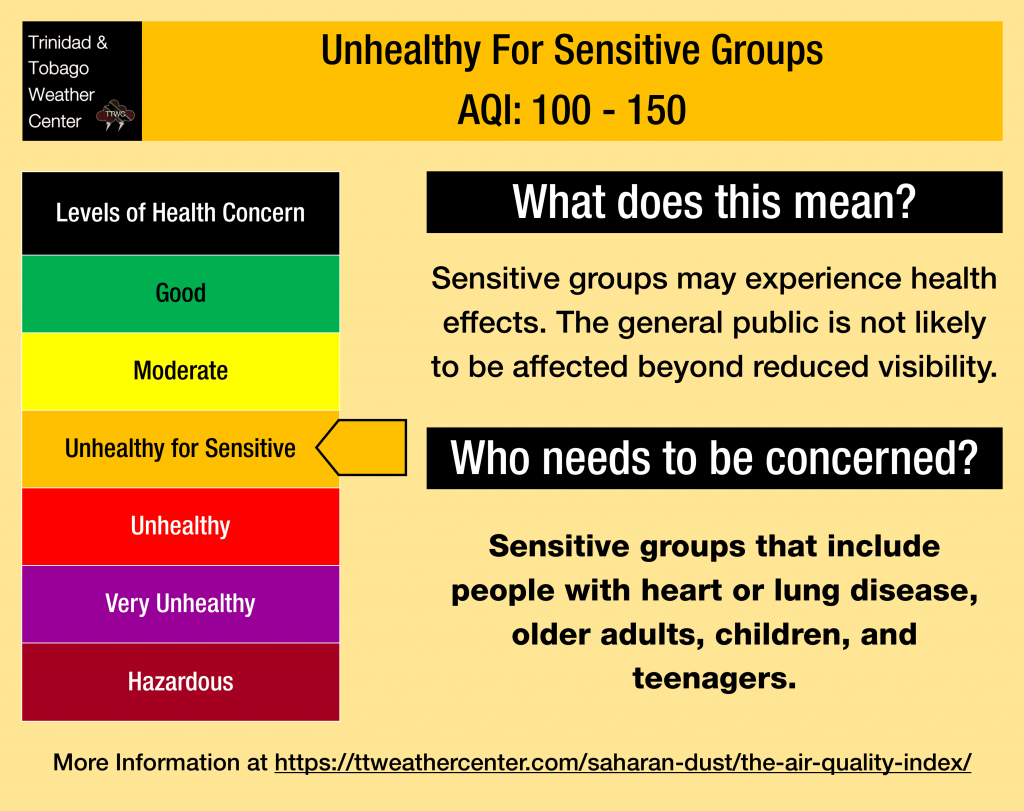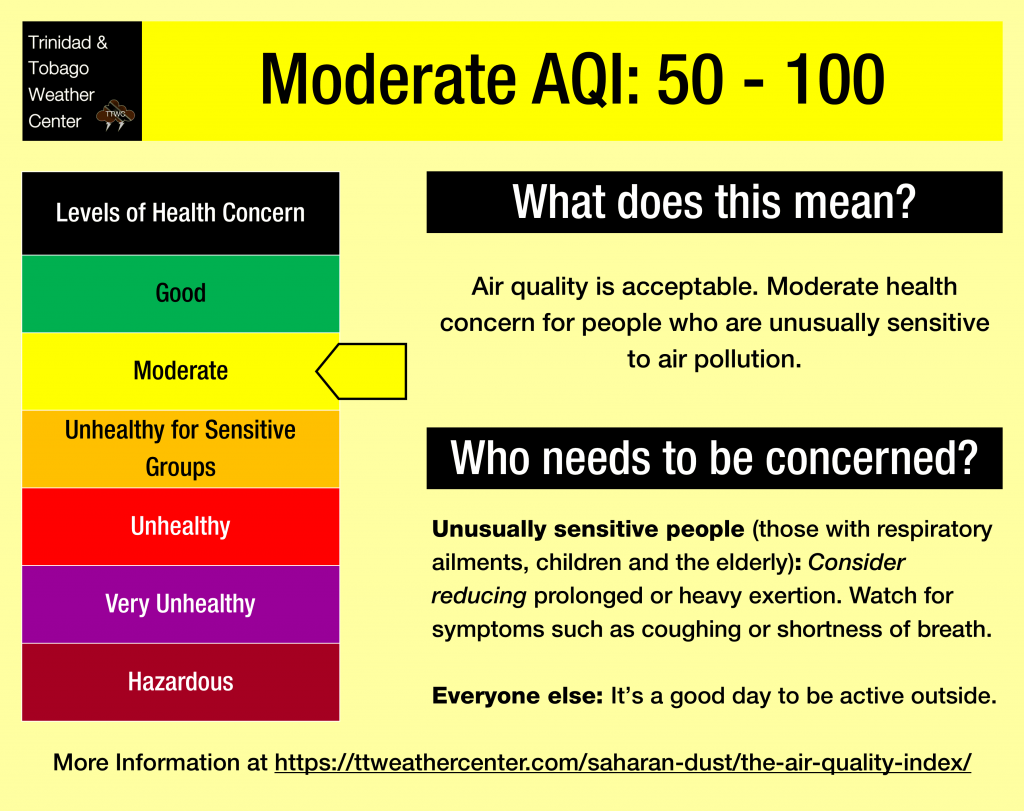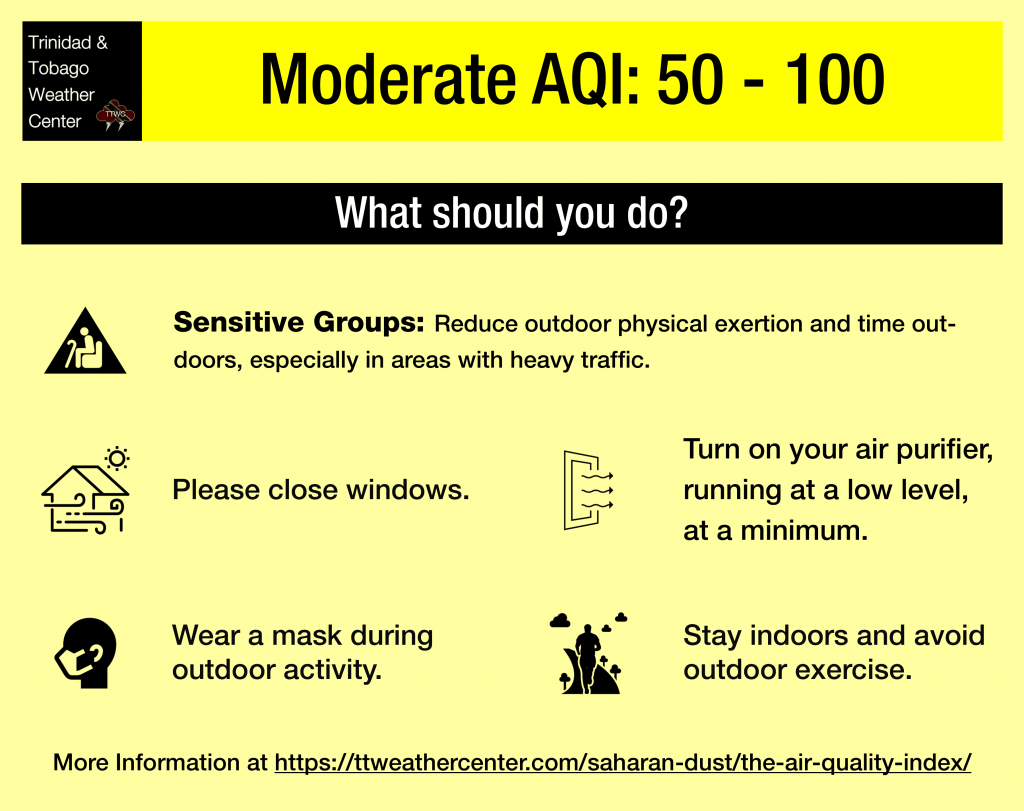Trinidad and Tobago is forecast to experience some reprieve from Saharan Dust for a brief 24-hour window tomorrow as a tropical wave moves across the country and the Windward Islands. However, as is typical for this time of year, a surge of Saharan Dust is quickly trailing, set to keep conditions fairly dusty through early June.
What you need to know
— Saharan Dust Surges: A moderate to high concentration surge of Saharan Dust is forecast to move across Trinidad and Tobago, the Windwards, and Leewards from late Saturday night, mainly from Sunday morning. High Saharan Dust concentrations are forecast to remain present through June 3rd, with fluctuating dust levels.
— Impacts: From Sunday through the next ten days, air quality is forecast to range from moderate to unhealthy for sensitive groups, with a further localized reduction in air quality levels near fires through the forecast period
— What Should You Do: In times of unhealthy air quality, everyone should take the necessary precautions. Throughout the forecast period, sensitive groups are advised to take the necessary precautions, particularly during high traffic and in the vicinity of fires.
Current AQI Levels Across T&T

The official air quality monitoring stations from the Environmental Management Agency (EMA) at Point Lisas, Beetham, and Toco are all reporting moderate levels, while San Fernando, Mayaro, and Arima have good air quality levels. There is no data from Scarborough.
Unofficial air quality monitoring stations at Longdenville, St. Augustine, and Woodbrook are reporting moderate to good air quality.
These measurements are based on PM2.5 (particulates the size of 2.5 micrometers and smaller, usually associated with increases in Saharan Dust, vehicle exhaust, and smoke) and PM10 particulates.
Over the last 24 hours, visibility has remained at 10 kilometers at the A.N.R. Robinson International Airport at Crown Point, Tobago, and at the Piarco International Airport, Trinidad.
Saharan Dust Forecast

Friday (May 24th) through Saturday (May 25th): Mostly good air quality across T&T with mild concentrations of Saharan Dust.
Sunday (May 26th) through Monday (Jun 3rd): A moderate to high concentration surge of Saharan Dust is forecast to affect Trinidad and Tobago, affecting air quality and visibility. Air quality levels that are unhealthy for sensitive groups are possible during this period, with moderate air quality likely. However, further air quality reduction is likely in areas where fires occur. Visibility is forecast to reduce as low as six kilometers, but lower visibility is possible near dawn and dusk. Everyone should take all precautions during this period.
What does this mean for you?


Mainly from May 26th, air quality is forecast to reach generally moderate to unhealthy for sensitive groups. With elevated concentrations present and drier and breezier conditions bringing the risk of fires, air quality is still forecast to be reduced, with further reductions in localized areas of fires, blowing smoke and dust, and high traffic.


We’re in a period where the Intertropical Convergence Zone, tropical waves, and occasional tropical cyclones may shield Trinidad and Tobago from the Saharan Dust events. While tropical waves are notable in moving dust across the Atlantic and the Eastern Caribbean, these periodic tropical waves also improve air quality.
The concentration of the dust that follows the wave depends on its strength as it moves off the West African Coast. This is because of stronger thunderstorms across Central Africa. As strong winds move downward and outward from these thunderstorms, the wind kicks up dust as it moves across parts of the Saharan Desert and transports it into the upper atmosphere. This “plume” of dust follows the axis of the wave as it progresses westward into the Atlantic.
Dust that makes it into the upper levels of the atmosphere can then get transported across the Atlantic Ocean. The plumes of dust eventually affect the Eastern Caribbean.
Larger, more concentrated plumes of Saharan dust begin in April and continue through November.











